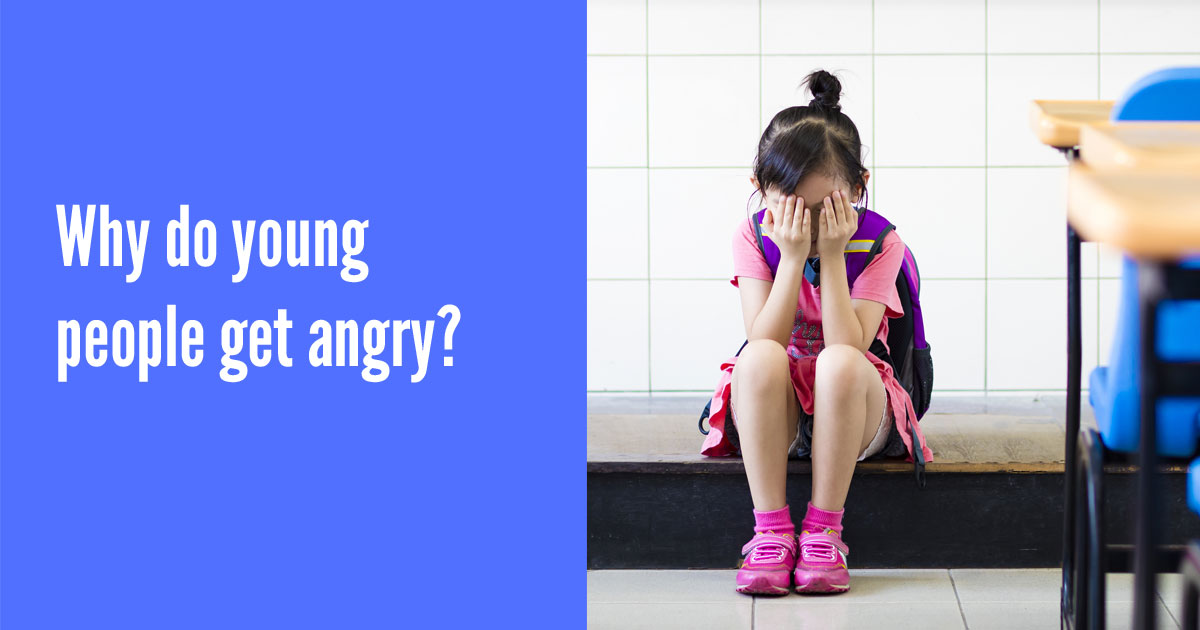It’s not just a SENCo problem any more – to maximise inclusion, every classroom teacher is now responsible for special needs and teacher training for new entrants is changing to reflect this.
Here are some important factors to consider that may be causing the problem (and some solutions to support students presenting anger outbursts).
(Don’t forget – we also have this helpful article and video about how to convey calm during a crisis!)
ASD (Autistic Spectrum Disorder)
(Also referred to as Autistic Spectrum Condition)
The autistic child – maybe 1% of the population – finds the world and its people frighteningly unpredictable. As they will likely have a permanently higher level of stress, it only takes a bit more to push them into a panic or flight.
Your SENCo and leadership team will already have provided some training in ASD, but the key concept is stress and the key solution is reducing their overload:
- Less cluttered, less over-bright/over-colourful class/school environment
- Clear, simple, unambiguous instructions
- Time for the child to understand your instructions and organise oneself to comply
- Calm and quiet
- Teacher/TA also to model calmness in stance, facial expression, tone and pitch of voice
- Routine
- Help with transitions (advance warning of change, visual timetable etc)
- Training children in social and emotional skills
- Educating all children in the need to make allowances for each other’s differences
For a wealth of information, tools and strategies for autism, see the AET website.
Mental and emotional health problems
There is increasing concern: “One in ten children and young people aged 5 to 16 has a clinically diagnosed mental health disorder and around one in seven has less severe problems.”
For more information and recommendations than we can include in this article, see the DfE’s March 2016 guidance.
Be aware that some of these problems may be related to changing relationships at home, various forms of abuse and neglect (that can take a long time to be discovered, bereavement, bullying by peers etc.)
Inadequate social skills
Many children have not had the right early-years experience.
Their parents/carers may not possess all the skills to raise children, and technology offers ways to keep the child occupied without them having to learn how to share with others, take turns, make compromises etc. Then they come to a place where they have to be merely one in a group of 30!
These students benefit from planned interventions such as social skills groups, where they can explicitly learn (and rehearse) the skills needed to mix with other children.
Inappropriate educational provision
While ADHD does exist (yes, even in France), we have to ask whether the way we teach children is really suitable for all.
An old SEND support expert told me, “We think of children as minds with bodies attached, but often it’s more useful to see them as bodies with minds attached.”
There’s the whole business of managing messages from the body – balance, discomfort, digestion etc – which may present as fidgeting, squirming, daydreaming; and young children in particular fizz with energy and tumble about with each other like puppies. Yet the goal of the National Curriculum is to sit them at desks ASAP so they can get on with head-learning.
Some think we need to let them catch up on what they learn through play, first. Yes, this won’t apply to all children – but it only takes one or two of these to disrupt a whole class with their attention-seeking, chaotic behaviour and (sometimes) strategic temper tantrums to avoid W.O.R.K.
Summary
Mostly, anger is genuine, and upsetting for the child as well as others. It’s an expression of anxiety, frustration, confusion, hidden things spilling over.
At the time you may feel angry with them yourself; afterwards, you may see what was going on.
All you can do is prevent incidents if possible, manage your own reactions, keep everyone safe, help the angry child in the right way.
(a) Know the child as well as you can, so you can be aware of factors outside school, or conditions, that may affect their behaviour. Talk to parents/carers, the SENCo, the family support worker etc – knowledge is power.
(b) Be alert – look at them at the start of the day. Any warning signs? Anything you can do to distract or subtly reassure? Any “helping” tasks they can be given?
(c) Check that their work is suitably differentiated, so that they aren’t bored or over-challenged.
(d) Look at the ASC-friendly principles above – they are useful for non-autistic children too.
(e) Stay calm (outwardly at least) – calm and confident stance, keep the voice pitch and volume under control, praise children who are complying etc .
(f) Manage your own stress – is there a system to give you a break, help you cool off, make you a drink? You’re only human.
(g) If yours is a school where outbursts tend to happen, staff need:
- further training in behaviour managements and special needs
to be skilled in de-escalation and safe physical handling if needed,
a clear system for backup help - a safe, quiet area where the child can cool off harmlessly
- a good system of reporting and recording
- opportunity for staff to discuss incidents and plan together for how to prevent/deal with them in future
(For some official guidance, see the Protocol For Managing Challenging Behaviour).

